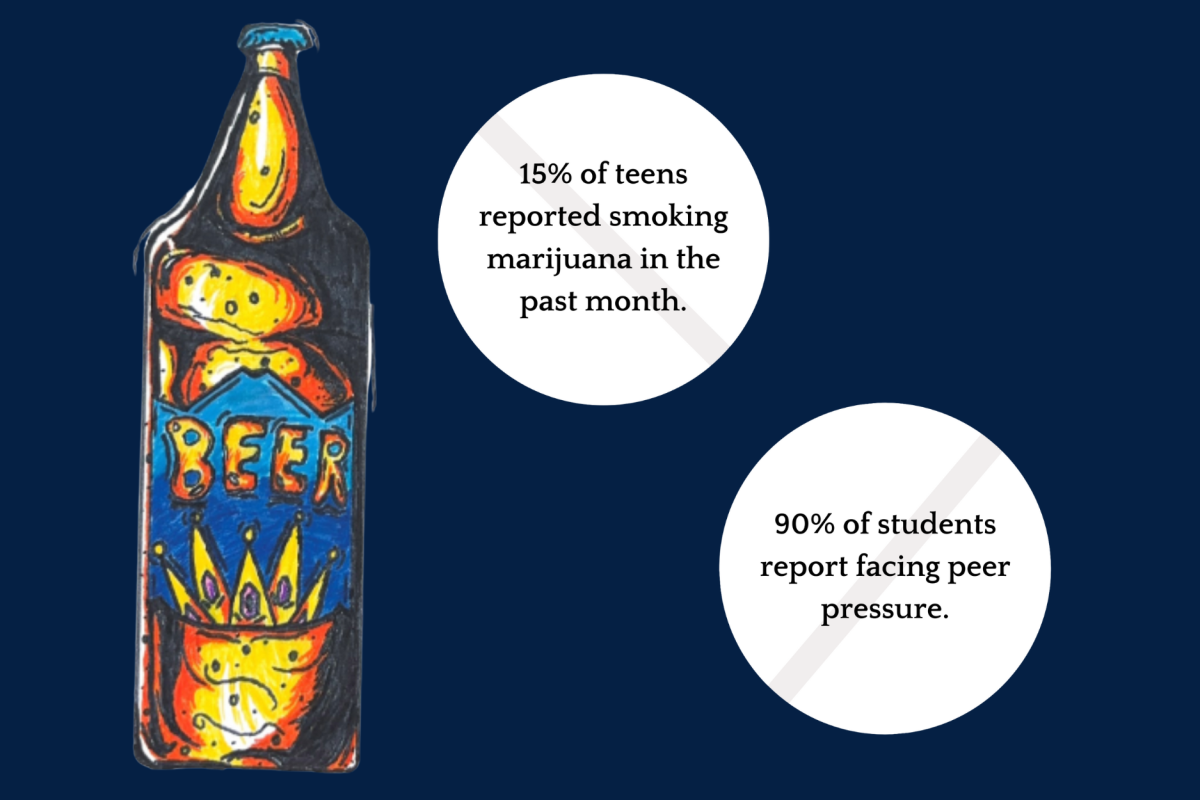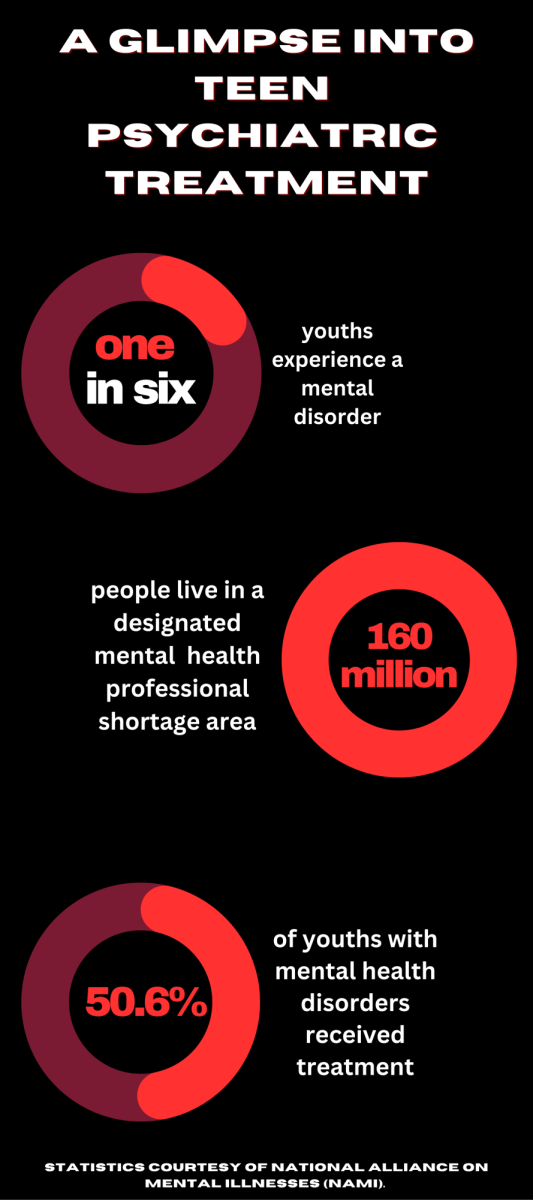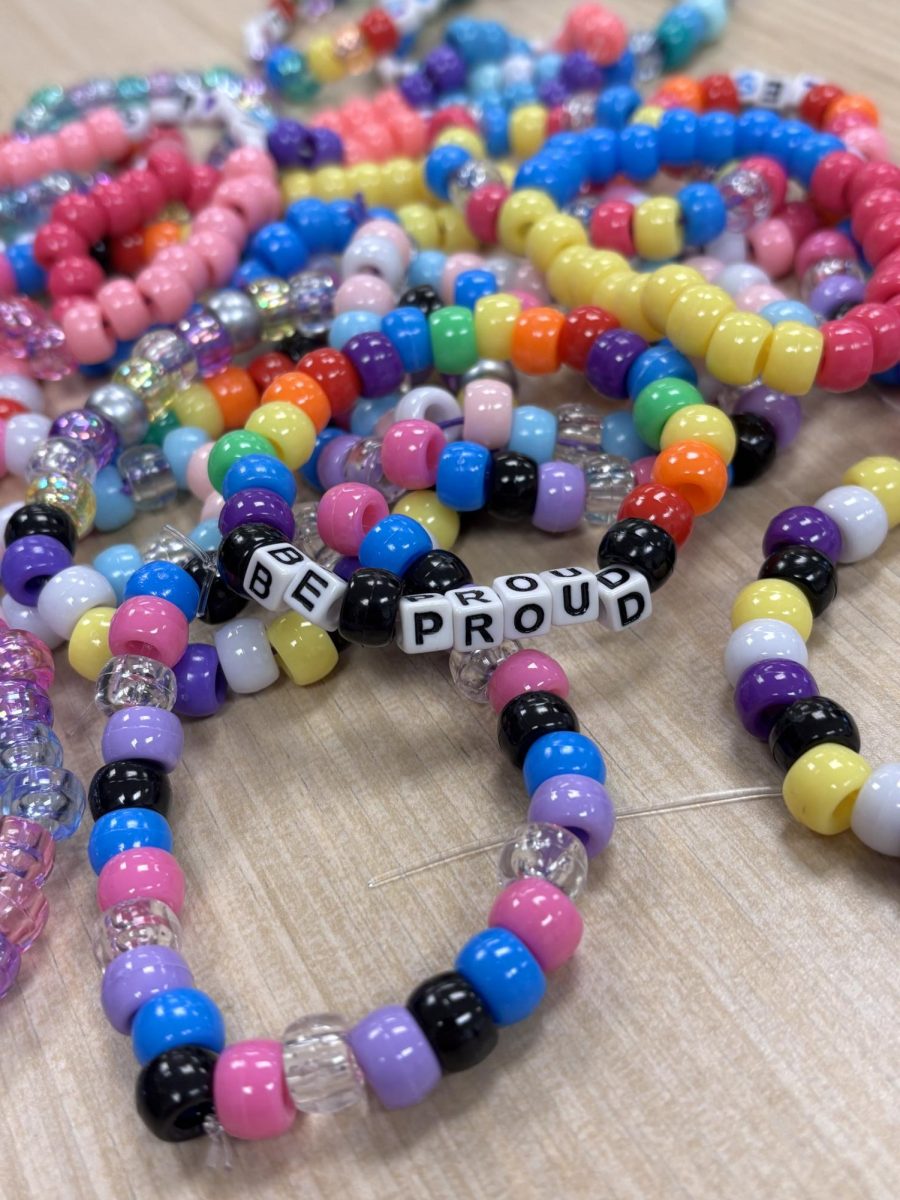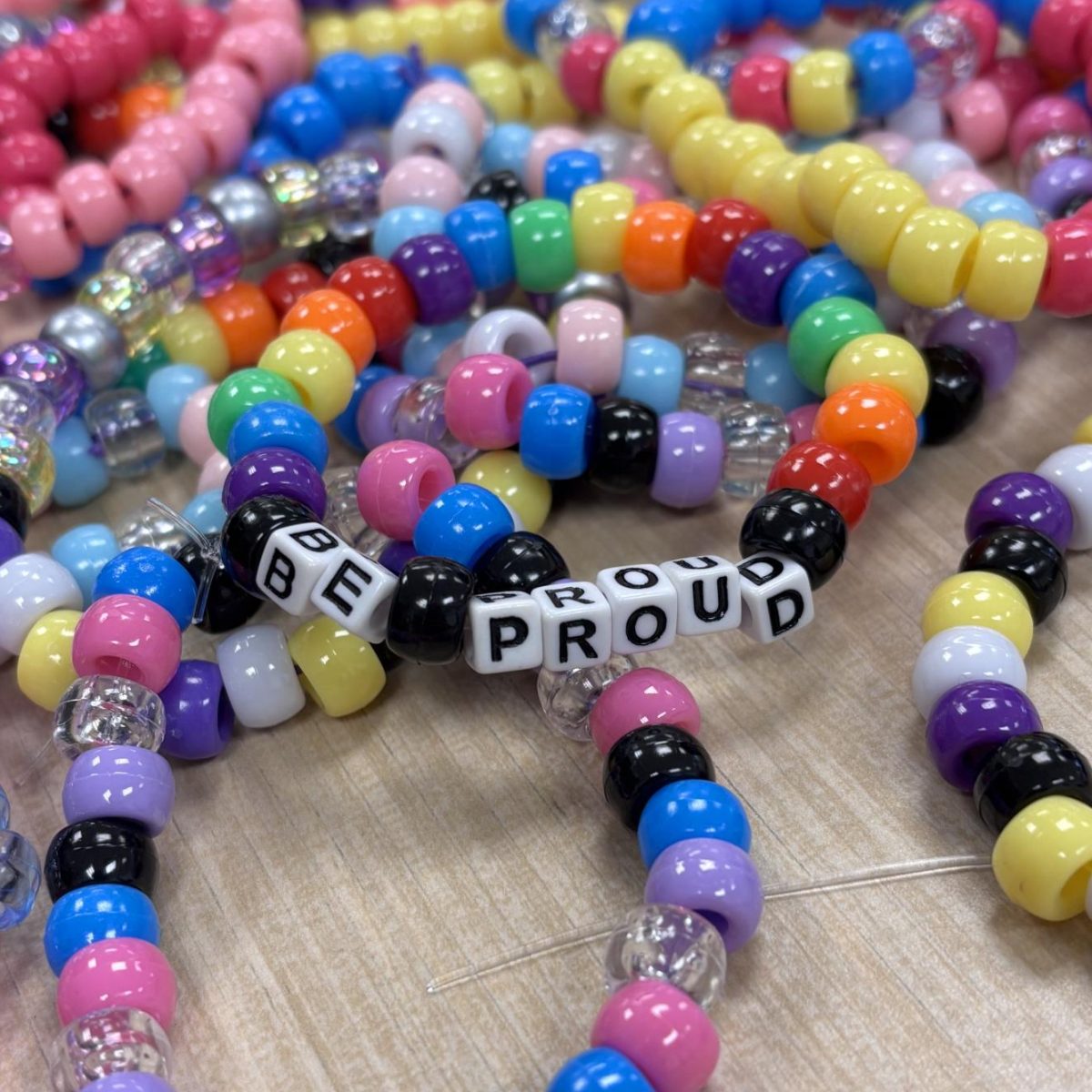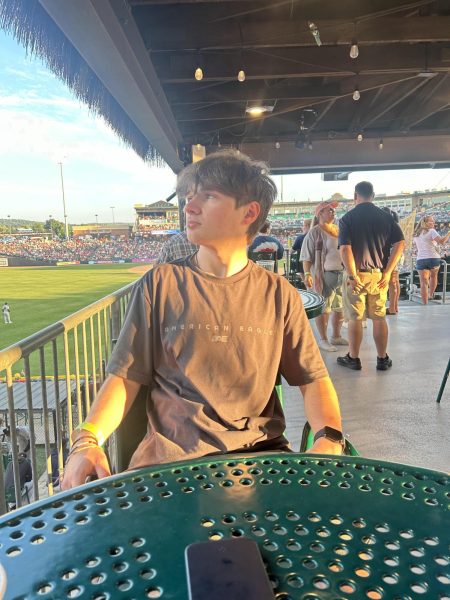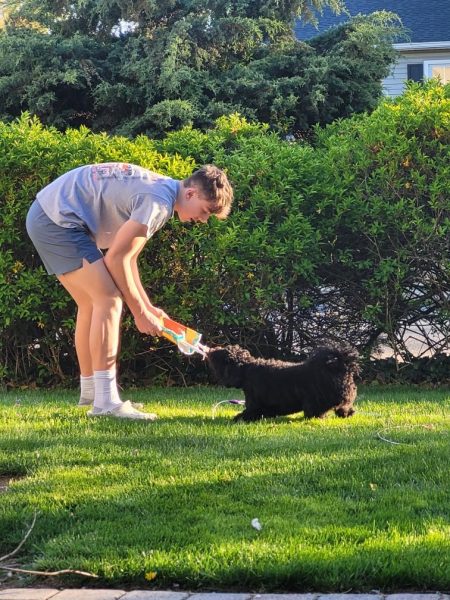This was previously published in our April 2024 issue.
Amidst the flashing lights and raging music, it’s easy to get caught up in the allure of a party.
It often seems fine — but everyone’s doing it, so why shouldn’t I? The drinking, the substances, the things many teenagers consider “harmless fun;” they’re not so harmless. Lines can become blurred, and what starts as a get-together can often lead to cycles of dangerous behaviors.
High school party culture — or the widespread participation of teenagers in unsafe party behaviors — isn’t just harmful in the short term. These dangerous behaviors that can be associated with parties, like drinking and substance use, often follow teens long after a party has ended — with issues like substance abuse building up over time, leaving the setting of a party and invading other parts of their lives. Parties tend to consist of drinking and smoking with groups of people. Unsafe and harmful scenarios take place while being intoxicated, and usually end poorly.
“It’s underage people in a room, smoking, drinking… alcohol poisoning is so easy — and then ‘what happens now?’ Nobody knows what to do,” said an EHS party-goer, whose name was changed to “Jane” for anonymity. Jane wishes to stay anonymous due to privacy and personal reasons. Jane wants to share her own experience dealing with party culture. “Nobody wants to call authorities because they don’t want to get in trouble. Think about it. What the f— do you do in that situation?”
According to the National Association of Alcohol Abuse and Alcoholism (NIAAA), in 2022, 5.8 million teenagers aged 12 to 20 reported drinking alcohol beyond “just a few sips” in the past month. A further 15 percent of teens, or one in seven, reported smoking marijuana in the past month, as per the National Institute on Drug Abuse (NIDA).
Jane went on to describe a typical high school party.
“It’s just a lot of people drinking and smoking. Not really any dancing. Just a lot of people with loud music in a room, drinking and smoking.”
For some teenagers, it can start small. It can be hard to recognize when these parties — in this context, events with more than a few friends and more than a few illegal substances — begin to be commonplace in their lives. It can start as just another part of being a teenager.
“My first [party] I went to was my freshman year. Someone was throwing it, and I was like, I gotta go for the experience, and then I didn’t go to one again. I was like, this is really stupid. I don’t want to be part of that again until summer, going into my junior year,” Jane said. “Me and my sister never really got along. But I got home from work, and for the first time in years, she was like, ‘Come hang out with us.’ So, immediately, I was like, ‘I’m down, whatever they do — absolutely.’”
This isn’t an uncommon way for partying to start. A study by the Wall Street Journal revealed that 90 percent of students surveyed reported experiencing peer pressure at least once, and another 22 percent reported frequent to solid exposure to peer pressure within the context of parties.
Peer pressure certainly affected Jane, and she continues to explain her first “party” experience with her sister and her friends.
“They [Jane’s sister’s friends] ended up staying for a few more nights. It just turned into a huge bender, and then these girls that she started hanging out with would always like to be at our house, always constantly drinking. Then, a month into this, I was like, ‘I’m so sick of this. I don’t like this. I’m not having fun,’ but I was spending more time with my sister than I ever did, so [screw] it. We keep going.”
Peer pressure does not necessarily take one given form, either. (Defined by The American Psychology Association, the influence exerted by a peer group on its members to fit in with or conform to the group’s norms and expectations.) However, it can be more profound than this; teenagers are often the most susceptible to peer pressure, according to Crossroads Health.
“At first it was worth it because I was making memories with my friends because that was stupid fun. The amount was just stupid teenage fun,” Jane said. “And then it got too far, and at a point, I didn’t want to be the first to back down.”
Most teens prioritize their self-image and “fitting in” to social norms. According to The Center for Parent & Teen Communication (CPTC), “Ultimately, teens want to create a consistent sense of self – meaning that they feel harmonious and in alignment with each other. That is a tall order.”
Peer pressure significantly impacts self-image, and as social pressures rise and teens care more about their self-image to the public, many may feel they have to conform to impress others at these parties.
And even then, that’s not enough.
“Then people kind of started seeing me like a ‘party girl,’ always drinking or smoking… I’m not,” Jane explained. “People would view me as that.”
In Jane’s case, it takes a toll on a person’s mental health. People saw her as a partygoer; her party life was in the past but followed her through interactions with people and how they viewed her, not only at social gatherings — but outside of them, too. The insecurities and expectations from parties can bleed into student’s lives outside of school.
“People just make assumptions about me, and also, I’ve had people who I don’t know talking [trash] about me because of these rumors,” Jane said.
The pressures of Jane’s social image built up and weighed on her mental health; it eventually led Jane to a breaking point.
“So many people didn’t like me because of this reputation I was given. It was every day. I would wake up and cry going to school because I was like, ‘I can’t. Everybody hates me. Everybody sees me as this person I’m not. I can’t focus on anything,’” Jane said. “It was keeping me up all night, every night. I was so anxious and worked up every single day.”
While these parties seem harmless and fun, they can quickly become nightmares.
“The worst things that have ever happened to me have happened while I was drinking, and I’m like, ‘I don’t want to be [that person]; I hate that,’” Jane said. “I’m going to say we got so hooked on alcohol…we started stealing it. And because of that, my sister and her best friend got in huge trouble with the cops, and my sister almost got kicked out of college because of it.”
Jane saw these parties the same way, but slowly they turned into more than that. It had started as just six friends sitting in a basement somewhere, laughing and drinking and just having a good time with each other.
This kind of peer pressure is common in social situations such as parties. (The amount she would party, coupled with being surrounded by people acting recklessly, and alcohol and drugs everywhere.) It can be easy to be sucked in and make a wrong choice.
Another EHS student, Bri McClain, shared her experiences with party culture — where her past participation threatened to get her kicked off of the EHS girls’ lacrosse team. She notes that since she has taken a step back from the party scene, she has experienced many changes in her life.
“My approach to party culture has become a lot more cautious over the years, and I have learned to be aware of my surroundings,” McClain said. “I also realized that party culture is never going to end. So you must have that firm foundation of self-discipline and those true friends. I also have learned that you shouldn’t judge anybody quickly.”
She continued, saying how it affects everyone differently.
“Everyone has different experiences with substances and with party culture. But when you bring substances into the picture, it’s going to look differently for everybody,” McClain said.
McClain is part of Kid-to- Kid, a club at Emmaus that seeks to reduce the negative impacts that party culture can have on teens. Kid-to-Kid serves as a means of outreach for many students, helping them set long-term goals and engage in safe behaviors rather than detrimental ones.
Jeannine Ross, a teacher at Emmaus and advisor for Kid- to-Kid, explained the club’s role in student outreach.
“Kid-to-Kid is designed to give students opportunities to participate in not only being a peer mentor to younger students when we go into the middle schools, but also interacting with individuals within the high school to encourage non-destructive behaviors,” Ross said.
Ross explained that awareness’s role is to help prevent students from becoming absorbed by party culture.
“We try to make students aware. We try to reach out to more of [a young audience] because if you look across statistics, younger students are getting involved with things at earlier stages than we may have seen when I was in high school,” Ross said. “So it’s making sure that they’re informed as to what their choices can look like, or what options they have, instead of thinking that they’re pigeonholed into only one direction.”
Ross also emphasized the importance of goal setting. Through trips to East Penn middle schools and a mentor-style setup, Kid-to-Kid is able to help students establish these goals and stay on track to achieve them.
“Students that do not have long term goals for themselves are much more likely to be at risk for making sure they’re not thinking about the consequences,” Ross said. “Students that have more long term goals set for themselves tend to make better decisions and choices.”


